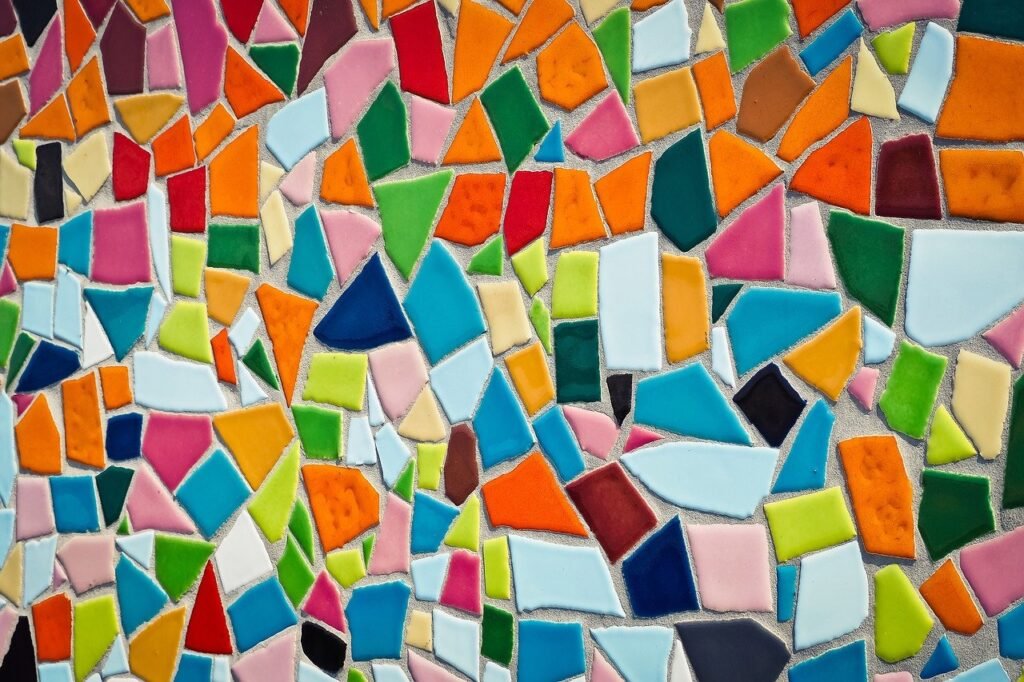
Before we talk about the best way to DIY Tile & Grout Cleaning, we need to talk about the best chemicals to clean tile and grout. Ammonia and Bleach are commonly used household cleaning and disinfecting chemicals. They are both common chemicals used for floor cleaning.
BLEACH (chlorine bleach), it’s one of the other smells that always reminds me of my Granny. It’s also commonly used for hard-floor cleaning AND (you guessed it!), DIY Tile and Grout Cleaning. It’s a traditional household cleaner, disinfectant and laundry staple, but is it the best choice for cleaning tile and grout?
Chlorine-bleach is a great cleaner, disinfectant and laundry brightener. It’s also one of the cheapest household chemicals you can buy (my Nan loved it). However, it is NOT the best chemical to use on tile and grout, by a long-shot. Yes, my Nan (God Bless Her), would be deeply disappointed in me; and many others I would say, as bleach is a longtime traditional and popular multipurpose cleaner (did I also mention it’s CHEAP!).
Due to the effective bleaching or whitening power of bleach, it is often touted as a great grout cleaner and stain remover (just add a brush and elbow-grease). However, there are plenty of reasons to NOT use chlorine-bleach for DIY Tile and Grout Cleaning.
WHY WE DON’T RECOMMEND BLEACH (OR AMMONIA)
While common household bleach or ammonia diluted in water may be a cheap and effective general-purpose floor cleaner (for most non-porous flooring). They both make BAD choices for DIY tile and grout cleaning – To get results you will normally need to use FULL-STRENGTH (undiluted chemicals); this is BAD for YOU and BAD for your GROUT.
WHY IS BLEACH (OR AMMONIA), BAD FOR YOU;
Household bleach is often responsible for serious eye injuries due to splashing. Chlorine-compounds are responsible for many calls to emergency services. Chlorine poisoning and exposures that result in hospital admissions are often due to inhalation, ingestion and skin contact.
It’s important to note that the risks of a harmful exposure to bleach, whether due to inhalation, skin or eye contact, are directly related to the application and rate of dilution (undiluted bleach is obviously the most dangerous) – You can read more about the risks of bleach use HERE.
Most of the people that use bleach for DIY Tile and Grout Cleaning, find that only full strength, undiluted chlorine-bleach gets results. Many will also scrub their floors on their hands and knees, using some kind of stiff brush (many with toothbrushes). This kind of DIY tile and grout cleaning method can equate to some long hours of seriously hard work and serious chemical exposure (especially if on your hands and knees).
Much of the above can also be said about Ammonia. Ammonia or Ammonium-Hydroxide, is a common household cleaning chemical. Ammonium Hydroxide (normally no-more than 5% by volume), is often the primary active ingredient in ammonia-based cleaning products. Airborne Ammonia, in the form of vapour is the primary risk to the cleaner, due to vapour-inhalation.
CAUTION: If you are going to scrub your floors with bleach (or ammonia), be sure to take some sensible precautions to limit the risks of exposure. Make sure the rooms you are working on are well ventilated; use fans, open windows and doors where possible. Wear eye protection and rubber gloves (better to be safe, than COOL). If you get bleach on yourself, wash it off immediately. Follow chemical dilution recommendations and guidelines. Limit the amount of time you are inhaling chlorine-bleach vapours (or any chemical vapours), to reduce the risk of any negative health complications. Rather than spending 12 hours breathing bleach vapours, do the work over the course of a week (for the benefit of your health).
Bleach and ammonia BOTH emit strong vapours that can potentially be harmful to some individuals. Bleach cleaning products emit hypochlorous acid and chlorine gas compounds that when inhaled can cause respiratory problems and other potentially harmful effects to human and pet health.
Ammonia and bleach should NEVER be MIXED. Bleach can also react with a number of other common household chemicals that when mixed can potentially produce toxic gases that are highly dangerous to human health when inhaled. I would recommend never mixing bleach with other household cleaners to prevent the risk of creating poisonous gases.
NUTSHELL; I personally believe that the ever-increasing CANCER rates of the general population are related to our ever-increasing exposure to, and use of CHEMICALS. Limiting exposure or avoidance wherever possible to DANGEROUS chemicals, including common household chemicals (do your research), will give YOU and YOUR FAMILY the best chance of NOT becoming a statistic.
WHY IS BLEACH (OR AMMONIA), BAD FOR YOUR GROUT;
Bleach can eat through dirt and grime on tile and grout. Bleach will also brighten up grout lines. However, while bleach and bleach containing products may brighten grout lines, they tend to give very uneven results. You often end up with grout lines taking on different colour shades and colour fading. More importantly, bleach can erode grout cement; weakening and compromising the integrity of tile flooring, leading to grout-fail and loose tiles (tile grout repair or replacement is expensive).
The problem is compounded by the porous nature of grout composite materials. Just as grout is very good at holding on to dirt, grease and grime. It’s equally as good at holding on to the chemicals used to clean it. If very corrosive chemicals (be it bleach, be it high alkaline or low acidic chemicals), are used to clean grout, it’s what gets left behind that does the damage. Some chemicals (not only bleach), can leave a film/residue in and on the grout that can lead to further soiling, staining and chemical erosion.
Best methods for DIY Tile & Grout Floor Cleaning.

EcoPro Cairns Tile and Grout Cleaning Service, from just $150.00 – BOOK NOW ON: 0451 160 460
Cairns Tile and Grout Cleaning Service
